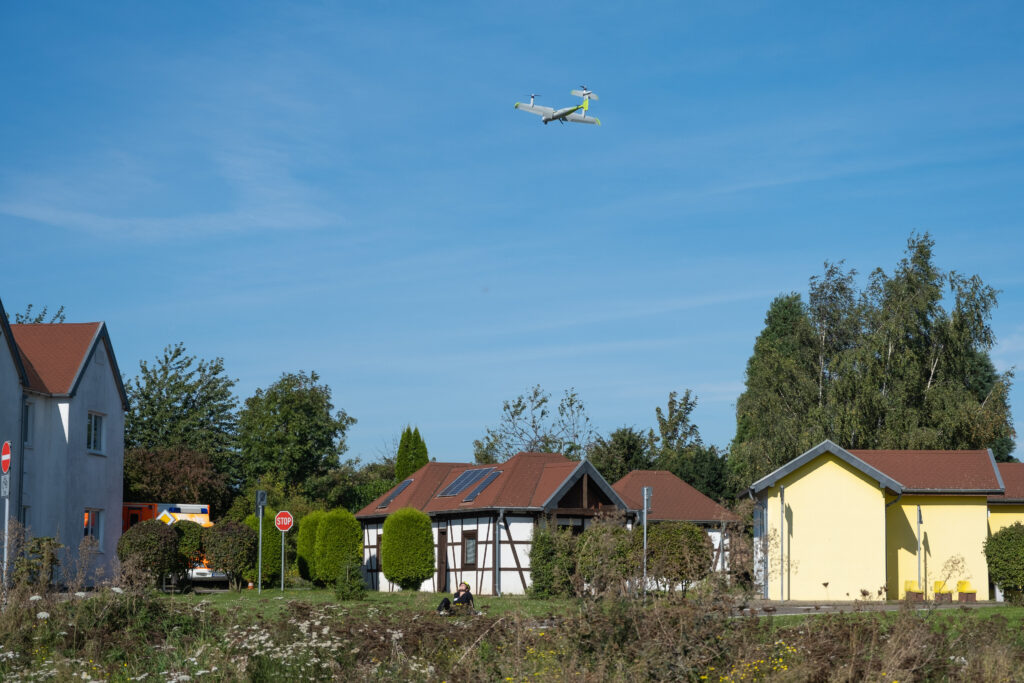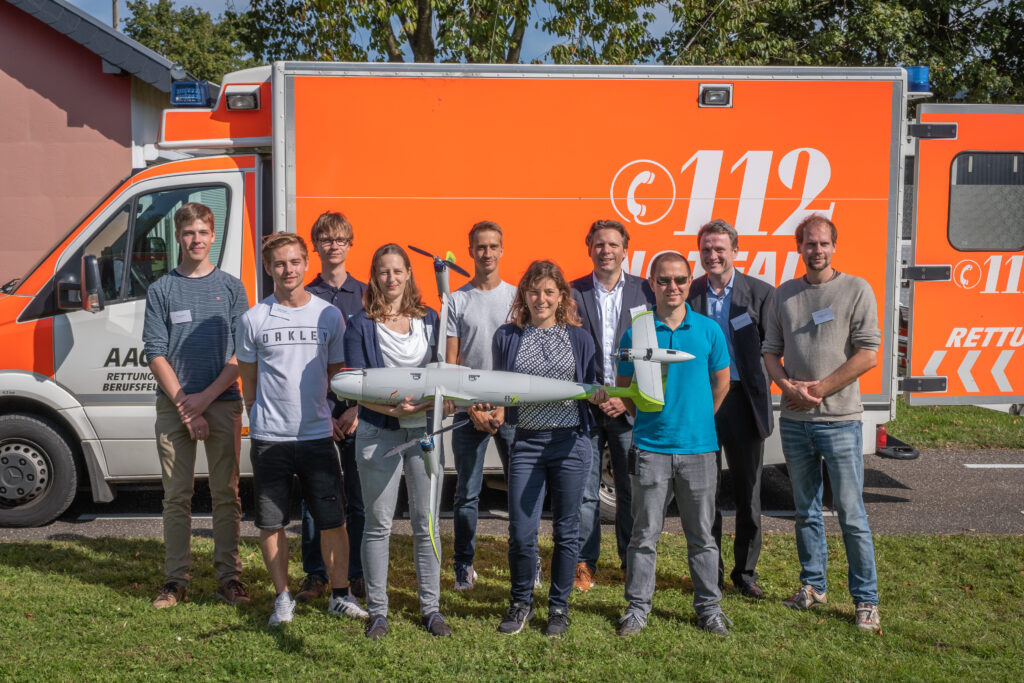flyXdrive is providing disaster support to emergency services
Aachen, 23.09.2021 – As part of the interdisciplinary research project FALKE, an unmanned aircraft was developed to support triage. Vital signs such as the heart and respiratory rate of those affected and injured are determined from the air. With the FALKE project, the interdisciplinary consortium consisting of Docs in Clouds GmbH, flyXdrive GmbH, IMST GmbH, the Rheinisch-Westfälischen Technischen Hochschule Aachen and the Ruhr-Universität Bochum offers a new technology for disaster control, to support emergency services in making decisions. flyXdrive GmbH supports this research project by operating and adapting the UAV. On September 23, 2021, the system was demonstrated as part of an exercise in Aachen.

A mass-casualty incident (MCI) is an event that can occur in disasters of various causes. In such an incident it is important to know how many subjects are injured and how severe their injuries are. To this end, the subjects are divided into categories that determine their treatment priority.
This is where the „FALKE“ UAV comes in to support the operation. The research project, funded by the Bundesministerium für Bildung und Forschung with 2.3 M Euro, uses a UAV that can detect the subject’s state of consciousness and can measure its vital signs. This is achieved using a radar system to measure distances, a conventional camera to detect color changes and motion, as well as an infrared thermal camera to detect temperature changes. Analysis of the recorded imagery allows the system to recognize whether the subject’s eyes are blinking, to capture the bodies’ position as well as to measure the heart and respiratory frequency. The result: a triage classification of the subject on the ground.

flyXdrive’s aerial systems are capable of flight beyond visual line of sight to reach the target area, and they can execute the flight maneuvers during observation fully autonomously. The flights are monitored from a control station.

